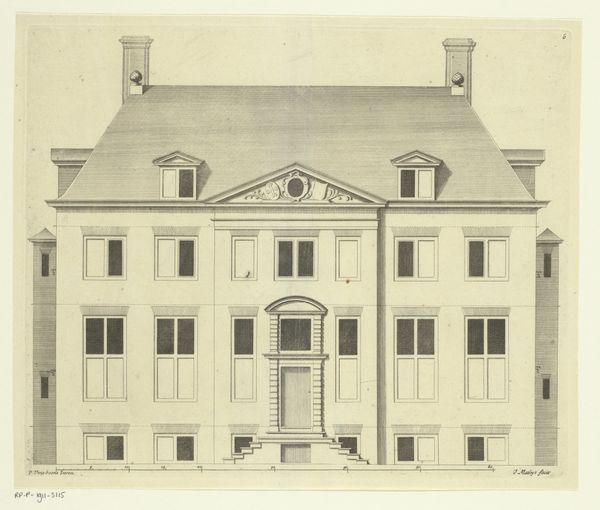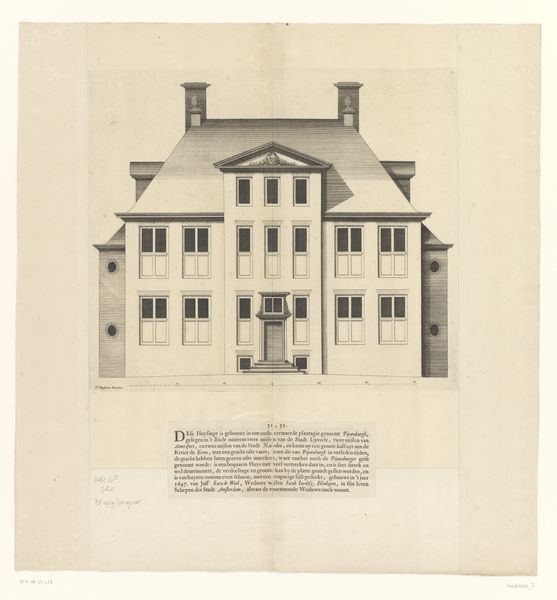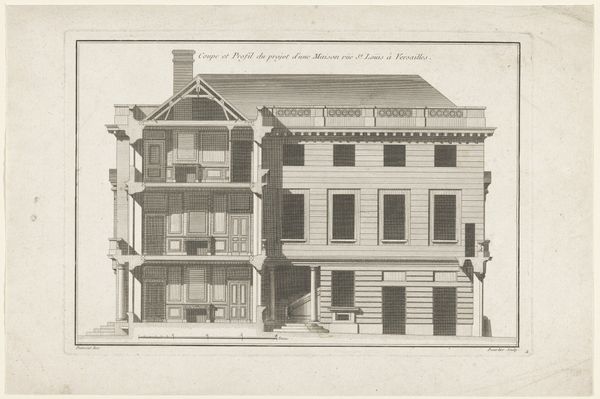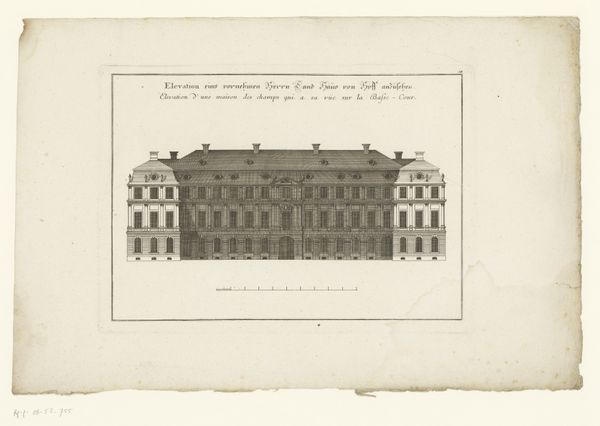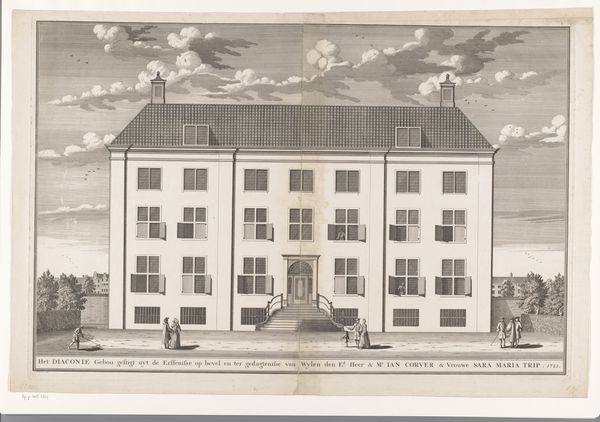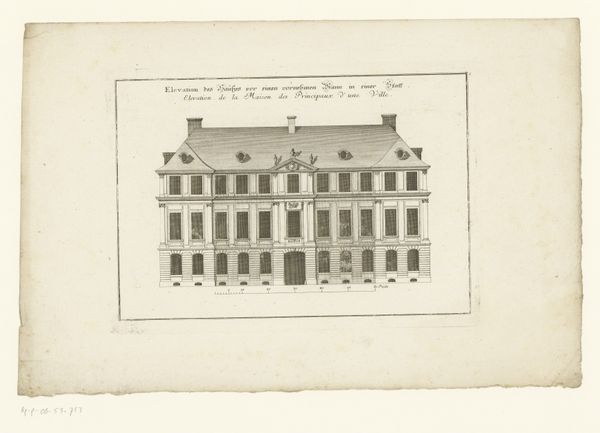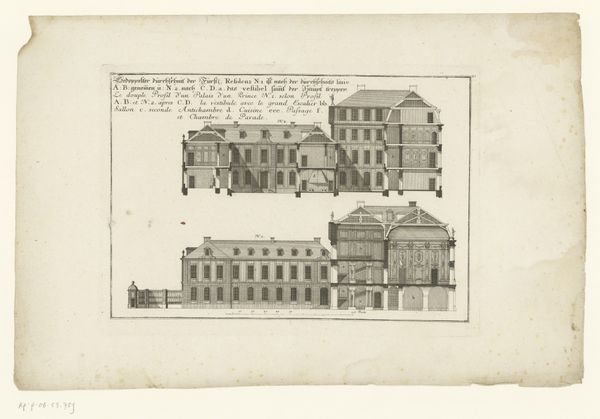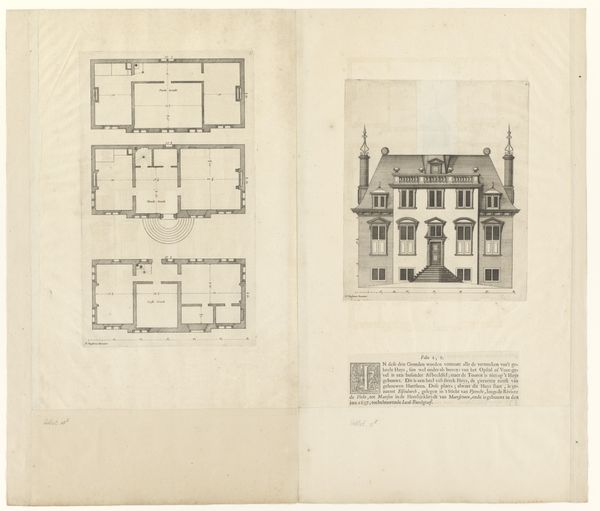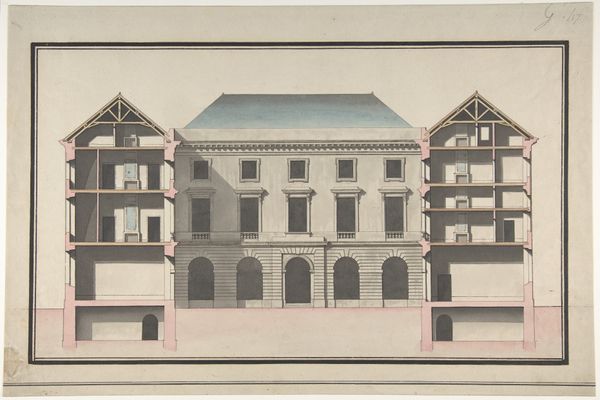
Zij- en vooraanzicht van huis Gansenhoef te Maarssen 1655 - 1693
0:00
0:00
drawing, print, etching, paper, architecture
#
drawing
#
dutch-golden-age
# print
#
etching
#
landscape
#
paper
#
architecture
Dimensions: height 287 mm, width 285 mm, height 288 mm, width 286 mm, height 535 mm, width 630 mm
Copyright: Rijks Museum: Open Domain
Curator: Let's turn our attention to this print, an etching made by Bastiaen Stopendael between 1655 and 1693. It’s titled "Zij- en vooraanzicht van huis Gansenhoef te Maarssen," showing side and front views of the Gansenhoef house. What are your initial thoughts? Editor: The symmetry is almost unsettling. It’s like a dollhouse plan, stripped bare. It evokes a feeling of reserved order. The rigid lines and unadorned facade lack any warmth, and it feels like the architecture is presenting itself more as a mathematical exercise than as a living space. Curator: It's fascinating how such a seemingly simple depiction of a building can evoke that. Stopendael worked during the Dutch Golden Age, a time when the merchant class was rising. These stately homes became symbols of their status. I see this drawing as a reflection of the materials used: paper, ink, and the engraver's tools shaping our view of that society. Editor: Indeed, but consider also the iconography. A grand house like this represented stability and legacy. Each window, each perfectly aligned brick spoke to permanence and power. The clean lines, devoid of ornamentation, broadcast the owner’s sober industriousness, which would become synonymous with the emerging merchant elite and Calvinist values. It projected an image of measured prosperity. Curator: Right. These houses become showcases, less for ostentatious display, and more for conveying careful economic practice, with visible assets like houses broadcasting their financial acumen and labor control. Think of it – materials procured, construction managed, artisans paid, all under the owner's purview. Editor: And consider where it sits geographically – Maarssen, near Utrecht. Then, and today, still symbolic of this region for this kind of architecture. Houses become symbolic shorthand, instantly communicating both wealth and cultural adherence. Curator: Absolutely. This artwork shows the relationship between a material building, a specific geographical space, and the construction of cultural identities through that architecture. What seems like a simple drawing tells us a great deal about class structure. Editor: It's a compelling reminder that even in seemingly neutral depictions, layers of social meaning are embedded within familiar symbols. This simple dwelling reveals such a nuanced history.
Comments
No comments
Be the first to comment and join the conversation on the ultimate creative platform.


